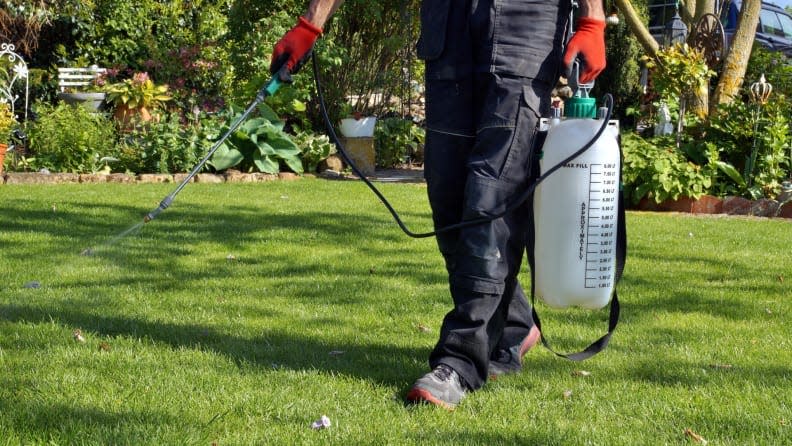'We are the solution to water pollution': 10 ways to keep our creeks and rivers clean
The unintended consequences of over-watering landscapes could be that the irrigation runoff is full of pesticides, herbicides and fertilizers, which may cause pollution and contaminate a nearby lake, river, and eventually the Delta or ocean.
Multi-year research begun in 2006 by Orange County Water Resources/Water Quality Advisor Darren Haver and University of California Cooperative Extension Specialist Loren Oki, found some disturbing results as they studied four comparative neighborhoods’ irrigation runoff.
“Eleven pesticides were found in the water samples from all sites in both counties throughout the year. The pesticides for which the samples were analyzed are all ant control products. These were chosen for examination as a result of a Department of Pesticide Regulation-UC Integrated Pest Management study, which found that over 60% of the pesticides that homeowners purchase are for ant control. Nitrogen, phosphorous, and potassium, the main ingredients in most commercial fertilizers, were also found in all sites year-round.
"Data loggers that monitored the flow of water from the storm drains revealed increases in runoff flows that occurred daily between the hours of 4 a.m. and 10 a.m. that were probably caused by over-irrigation,” according to the California Urban Horticulture’s, “Urban Runoff Research,” which reported their findings. https://ccuh.ucdavis.edu/urban-runoff-research

Ant killers are toxic to wildlife
Oki’s and Haver’s findings were startling.
“Bifenthrin, a commonly used pyrethroid insecticide, has been found in the runoff from all 8 sites, ranging from less than the limit of detection of 0.5 ng/L to more than 6,000 ng/L (nanograms per liter, equivalent to parts per trillion). Bifenthrin is found in many home pest control products, especially those for ants and lawn insects. It is also used by structural and landscape pest control professionals.
"Depending on its concentration, it can be toxic to aquatic organisms including fish. Bifenthrin breaks down more slowly than many other insecticides, with a half-life in soils of about 120-180 days. The median concentration of the chemical varied between the sites from 1.9 ng/L to 36.5 ng/L.”
Fertilizers degrade waterways
When fertilizers end up in irrigation runoff from our gardens, and travel to a waterway, the nutrient load can often upset the delicate balance of the waterway. Water plants will thrive, pulling available oxygen away from fish and other aquatic life. The waterway can weaken and degrade over time. Algal blooms are good example of a natural system out of balance. Excess nutrients are usually the cause.
Master Gardener’s conduct outreach
Based on their research, Dr. Oki and Advisor Haver developed Best Management Practices for homeowners, which Master Gardeners in Sacramento and Orange counties helped disseminate, listed below.

ANR’s 'Ten top ways to keep our water clean'
Avoid using pesticides. Be sure you have identified a specific pest problem before applying any pesticide.” Ask a Master Gardener if you are looking for a non-chemical solution.
Keep fertilizer and pesticides off of hard surfaces like sidewalks and driveways. Sweep any material that accidently gets on hard surfaces back onto lawns.
Don’t overuse fertilizer. More is not better. Actively growing turf, flowering shrubs, some annuals and fruit trees require regular fertilization but ornamental trees do not. Use slow-release fertilizers and be sure to measure and apply them according to label directions.
Avoid using pyrethroids insecticides to control ants. Manage ants by reducing food sources, excluding them from homes, and using baits in containers.
Use a mulching mower to recycle your lawn clippings and reduce your lawn’s requirement for fertilizer.
Dispose of garden chemicals properly. Never sweep, hose off, or pour leftover pesticides or fertilizers into drains or gutters.
Manage your watering system so water does not run off your landscape onto hard surfaces and into gutters.
Reduce runoff by using mulches in beds and permeable materials for walkways and driveways. Aerate and add organic matter such as compost to heavy or compacted soils. Install terraces or other features on slopes to keep water on site.
Install equipment such as drip irrigation, soaker hoses, “smart” irrigation controllers, and rotor heads that improve watering efficiency and distribution.
Choose water efficient plants and garden designs. Be creative about reducing your landscape’s need for water.
Remember to protect your waterways by eliminating toxic pesticides and excessive fertilizer in your garden. “We are the solution to water pollution!”
Do you have a gardening related question? Contact the San Joaquin UC Master Gardeners at (209) 953-6112. More information can also be found on our website ucanr.edu/sjmg.
This article originally appeared on The Record: 10 ways home gardeners can help keep creeks and rivers clean

